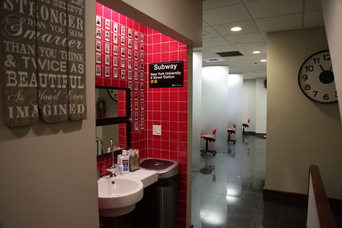Straightening teeth isn’t always simple. Some patients deal with overcrowding, bite issues, or impacted teeth that call for special attention. These cases need a different approach, one that moves beyond standard braces and timelines. In Brooklyn Heights, orthodontists use advanced tools and methods to make Complex Orthodontics faster and more effective. With new techniques and smart planning, even the toughest alignment problems can now be corrected with less hassle and better results.
What Makes a Case Complex?

Orthodontists consider several issues to be complex. These cases often include severe crowding, impacted teeth, jaw misalignment, and open bites that resist standard treatment. Patients who have missing teeth, a history of trauma, or habits like thumb-sucking may also need special care.
Treating these problems used to mean surgery or long treatment periods. Today’s technology gives orthodontists better control, allowing them to treat cases that once seemed difficult.
Common Complex Issues
1. Severe Crowding or Spacing
Crowded teeth can overlap and twist in different directions. This makes cleaning harder and increases the risk of decay. Large gaps between teeth may also lead to bite problems or affect the appearance of your smile.
2. Bite Problems
Orthodontists treat underbites, overbites, open bites, and crossbites. These issues often involve both teeth and jaw positions. Left untreated, they can cause pain, jaw clicking, and trouble chewing.
3. Impacted Teeth
Sometimes, teeth don’t erupt as expected. Canines and molars often get stuck under the gumline. Orthodontists use braces or appliances to guide them into place before extraction becomes necessary.
4. Previous Failed Treatment
Patients who wore braces in the past but didn’t complete their treatment may need corrections. Relapsed cases can be harder to fix due to scar tissue or shifting bones.
5. Jaw Misalignment
Some patients have upper and lower jaws that grow at different rates. This can affect how the teeth meet and how the face looks. Correcting these cases often takes a mix of appliances and braces or aligners.
How Orthodontists Handle Complex Cases
Brooklyn Heights orthodontists begin with a complete evaluation. They use digital scans, 3D imaging, and detailed exams to understand tooth and jaw movement. These tools give a clear picture of the issue and allow precise planning.
Once the orthodontist understands the challenge, they create a plan using a mix of tools designed to speed up progress while still producing long-term results.
Accelerated Orthodontics: Speed Without Compromise
Advanced techniques help orthodontists shorten treatment time. These options apply light, controlled force to teeth and bones, stimulating movement without increasing pain.
Propel Orthodontics
Propel is a device that creates small points of stimulation in the bone near the teeth. These points encourage faster tooth movement. The procedure is simple and done in the office.
Patients who use Propel often see faster changes compared to those using braces or aligners alone.
AcceleDent
AcceleDent is a hands-free device patients wear at home for 20 minutes each day. It uses gentle vibrations to speed up movement by helping the bone surrounding the teeth respond more quickly.
This method works with braces or aligners and helps reduce discomfort between visits.
Temporary Anchorage Devices (TADs)
Orthodontists sometimes use tiny titanium anchors to help control tooth movement. These anchors give better leverage, especially in cases involving molar movement or tooth intrusion.
TADs reduce the need for headgear and sometimes eliminate the need for surgery.
Types of Braces for Complex Treatment
Not all braces work the same. In difficult cases, orthodontists choose the type based on how much movement is needed and how the patient responds to treatment.
Traditional Metal Braces
Metal braces remain one of the most effective tools for moving teeth. They give orthodontists full control over alignment and bite correction.
Orthodontists often choose metal braces for younger patients with jaw growth concerns or severe crowding. They work well with add-ons like expanders or power chains.
Self-Ligating Braces
Self-ligating braces use clips instead of rubber bands to hold the wire. This design reduces friction, which can speed up progress and make the braces easier to clean.
These braces often work well in complex cases because they allow smoother adjustments and fewer visits.
Clear Aligners for Selected Cases
Invisalign and similar systems used to be only for mild cases, but they’ve improved. Now, aligners can treat bite problems, crowding, and even some cases of impacted teeth when paired with attachments or precision cuts.
Aligners appeal to Adult patients who want discreet treatment. In some cases, orthodontists use aligners after braces to fine-tune results.
Children and Teens with Complex Needs
Early intervention often makes complex treatment easier. Orthodontists in Brooklyn Heights encourage early screenings around age seven. This allows them to track jaw growth and step in before issues get worse.
Expanders, space maintainers, and partial braces can guide development and create room for permanent teeth. Treating problems early often avoids surgery later.
Adults with Complex Orthodontic Needs
Adult patients often come in with untreated problems or failed past treatments. They may also have dental restorations, missing teeth, or concerns about appearance.
Orthodontists work closely with general dentists to coordinate care. They can use Invisalign, ceramic braces, or lingual braces along with acceleration tools to reduce treatment time without sacrificing results.
The Benefits of Fast and Focused Treatment
Fast orthodontics for complex cases offers more than a shorter timeline. Patients often see these benefits:
-
Shorter total time in braces or aligners
-
Fewer appointments
-
Reduced discomfort
-
Lower risk of root damage or bone loss
-
More stable long-term results
Brooklyn Heights clinics that offer these tools give patients a better overall experience. They also help reduce the stress of long treatment periods.
Choosing the Right Provider
The success of complex treatment depends on the skills and tools of the provider. Look for orthodontists who specialize in difficult cases and offer modern techniques like Propel and AcceleDent. A detailed consultation, clear plan, and regular follow-up all help patients stay on track and see results faster.
Why Patients Choose House of Orthodontia
House of Orthodontia provides advanced orthodontic care across Brooklyn and Manhattan. We treat a wide range of cases using technology designed to make treatment faster and more comfortable.
We offer metal braces, clear Braces, Invisalign, and acceleration tools like Propel and AcceleDent. Also, we use advanced scanning and imaging to plan treatment with accuracy.
Our team works with both children and Adults, focusing on results that improve confidence, health, and function.
Book a Consultation Today
If you face a challenging orthodontic problem or want to fix an issue that previous braces did not resolve, contact us today. We welcome new patients in Brooklyn Heights and beyond.
Brooklyn Office:
122 Atlantic Avenue, Brooklyn, NY 11201
New Patients: 929-930-1768
Current Patients: 718-852-4414
Visit houseoforthodontia.com to learn more or book your visit online.
FAQs
Can Invisalign fix complex orthodontic issues?
Invisalign can handle some complex cases, especially when combined with attachments or acceleration tools. The orthodontist will evaluate if it fits your needs.
Is accelerated orthodontics safe?
Yes. Methods like Propel and AcceleDent are FDA approved. They support natural tooth movement without increasing risks.
How long does treatment usually take for complex cases?
Treatment time varies but often falls between 18 and 30 months. Acceleration tools can reduce this by several months.
Do all orthodontists offer fast-track options?
Not all clinics use these tools. Choose a provider that offers Propel, AcceleDent, or other advanced systems if you want to reduce treatment time.
Will fast treatment cost more?
Some advanced tools add cost, but the savings in time and fewer visits can balance the expense. Your provider will review costs before treatment starts.




